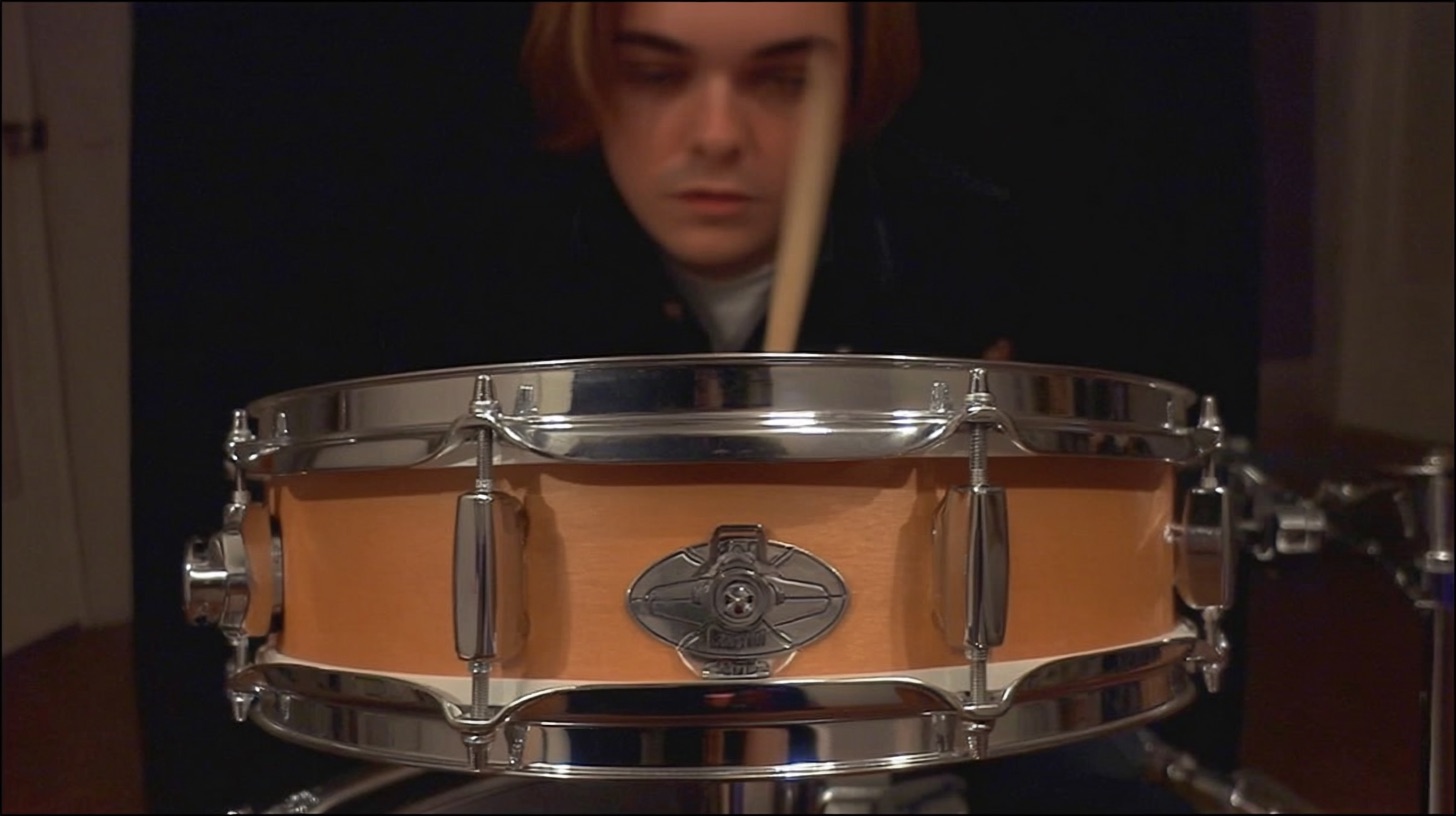
Austin Archey & Lorna Shore’s rise to the top of deathcore
Nail The Mix Staff
Lorna Shore’s recent explosion onto the global stage has been nothing short of insane. Their sound is monumentally heavy, symphonic, and surgically precise. A huge part of that sonic identity isn't just played, but meticulously crafted by their drummer, Austin Archey.
If you think of Austin Archey as just the guy behind the kit, you’re missing half the picture. He’s a core creative force, a primary songwriter, and a producer whose fingerprints are all over the band's final sound. His approach to drums—from programming and sample selection to advanced processing—is a masterclass in how modern metal is made.
Let's pull back the curtain and break down the techniques that power the Lorna Shore drum sound.
More Than a Drummer: Archey's Role in the Lorna Shore Sound
In today's metal landscape, especially in genres as technically demanding as deathcore, the drums are often the bedrock of the entire songwriting process. Austin Archey isn't just writing beats to accompany riffs; he’s building the compositional foundation.
His intricate patterns, blistering blast beats, and dynamic grooves often serve as the skeleton that the guitars, synths, and vocals are built upon. This producer-minded approach means his drum sound has to be perfect from the very beginning. It needs to have impact, clarity, and the right atmosphere to support the song's epic scale. This all starts with the raw ingredients: the samples.
Building the Foundation: Drum Programming & Sample Selection
While Austin is a monster player live, the precision required for Lorna Shore’s studio albums often starts in the box. This gives him ultimate control over every single hit.
The Core Kit: Sample Libraries and Layering
You can't build a massive drum sound with weak samples. The starting point for a sound like this is almost always a top-tier drum library. Think industry-standard tools like Superior Drummer 3 or a variety of kits from GetGood Drums.
But the real magic isn't in just loading a preset. It's all about layering.
- Kick Drum: A modern metal kick is rarely a single sample. It's a carefully constructed stack. You might start with a primary kick from a library like GGD's Modern & Massive for the main body and punch. Then, you layer in another sample specifically for the "click" or beater attack (sometimes an EQ'd sample or even a dedicated "click" sample). Finally, you might blend in a third, sub-heavy sample (like a processed 808 or a sine wave triggered by the MIDI) to add that chest-thumping low-end weight.
- Snare Drum: The snare follows the same philosophy. You'll have your main sample for the body and crack. Then, layer in a second sample with a really sharp transient or a "pingy" character to help it cut through the wall of guitars. A third layer might be a dedicated room or reverb sample that you can blend in for size.
Humanization and Velocity: Making it Feel Real
The biggest giveaway of programmed drums is a static, robotic feel—the dreaded "machine gun effect." Austin's parts are complex and fast, but they still have groove. This is achieved through meticulous velocity editing and humanization.
Instead of every snare hit being at a velocity of 127, you vary them. Accents are harder, ghost notes are softer. This is crucial for rolls and fills to make them breathe. Most modern samplers like Superior Drummer 3 have deep controls for this, allowing you to apply subtle timing and velocity variations across the kit, mimicking the natural imperfections of a real performance.
Shaping the Impact: Processing the Drum Bus
Once the MIDI performance is locked in and the samples are chosen, it's time to process them into the final, aggressive sound. This involves a ton of EQ and compression.
Surgical EQ for Clarity and Punch
In a mix as dense as Lorna Shore's, every instrument needs its own space. For drums, this means aggressive and surgical EQ.
- Kick: You’ll typically see a boost in the sub-bass frequencies (around 60-80Hz) for weight, a significant cut in the "boxy" low-mids (around 300-500Hz) to remove mud, and a boost in the high-mids (4-8kHz) to accentuate the beater's "click" so it cuts through.
- Snare: Boost the fundamental "thwack" (around 200Hz) for body, cut the same boxy area as the kick to prevent clashing, and add a high-shelf boost for "crack" and sizzle to make it slice through the mix.
- Cymbals: A high-pass filter is non-negotiable here. You need to cut out all the low-end rumble the cymbal mics might pick up. After that, it’s about taming harshness with a narrow EQ cut somewhere in the 4-6kHz range where cymbals can get painful.
Strategic Compression for Power and Control
Compression is what gives the drums their power and consistency. It’s not about just one compressor; it’s a multi-stage process.
Individual Hits
On the snare channel, a fast-attack compressor is key. Using a FET-style compressor plugin (emulating a classic Urei 1176) like Slate Digital's FG-116 or Arturia's FET-76 can be perfect. A fast attack and fast release will clamp down on the initial transient, making the snare feel fatter and more controlled.
The Drum Bus
After processing individual channels, they all get sent to a drum bus. Here, you use a "glue" compressor to make the whole kit feel like a single instrument. An SSL-style bus compressor is the classic choice, like the Waves SSL G-Master Buss Compressor or Cytomic's The Glue. Use a low ratio (2:1 or 4:1) with a relatively slow attack to let the transients through, and a fast release to bring up the energy. This tightens up the whole performance without crushing the life out of it.
The Secret Weapon: Parallel Processing
This is a staple of modern metal mixing. You send your main drum bus to an auxiliary track and absolutely nuke it with compression—we're talking an 1176-style plugin on the "all buttons in" setting or any compressor with a super high ratio and fast attack/release. The result sounds over-the-top and squashed on its own.
But then, you blend just a little bit of that crushed signal back in underneath your main drum bus. This adds incredible thickness, sustain, and energy to the drum sound without sacrificing the punch and dynamics of your main bus.
Creating the Atmosphere: Reverb and Effects
Lorna Shore's sound is epic, and the drums contribute heavily to that sense of space.
The Snare Reverb That Defines the Genre
That massive, explosive snare sound you hear in their music is a classic production trick. It’s a huge reverb with a short, abrupt tail.
You can create this by sending your snare to an aux track with a large plate or hall reverb (Valhalla VintageVerb is a go-to for this). The key is to place a noise gate after the reverb plugin. Set the gate's threshold so it opens when the snare hits and closes quickly, cutting off the reverb tail. This gives you that huge "BOOSH" sound without washing out the mix with a long decay.

100+ Insanely Detailed Mixing Tutorials
We leave absolutely nothing out, showing you every single step
Room Mics and Ambience
Using the room mic channels within your drum sampler is crucial for creating a believable sense of space. You can automate the level of these room mics throughout the song—turn them up for huge, slow, atmospheric sections, and pull them down during fast, technical blast beats to keep things tight and clear. This kind of automation adds a ton of dynamic life to the production.
Bringing It All Together
Austin Archey’s role proves that modern metal drumming is as much about production prowess as it is about performance chops. It’s a combination of:
- Thoughtful song structure built on a drum foundation.
- Meticulous sample layering to create a unique kit.
- Surgical EQ and multi-stage compression for clarity and impact.
- Creative effects like gated reverb to build atmosphere.
Understanding these concepts is one thing, but watching a world-class producer actually put them into practice is a complete game-changer. Seeing them dial in the parallel compression, automate the room mics, and make a drum kit sit perfectly in a dense, aggressive mix is how you truly level up your own productions.
If you’re ready to stop guessing and learn how the pros build these monumental sounds from scratch, you need to see it for yourself. Nail The Mix gives you a front-row seat, letting you watch the producers behind your favorite albums mix them in real-time with the actual multitracks.
Get a new set of multi-tracks every month from a world-class artist, a livestream with the producer who mixed it, 100+ tutorials, our exclusive plugins and more
Get Started for $1




